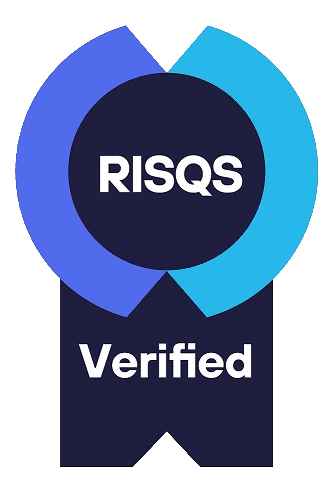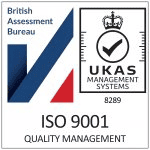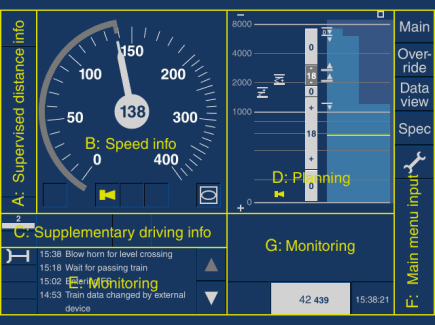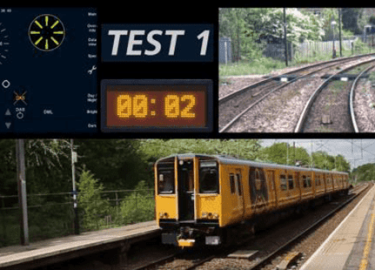

Network Rail has developed an integration facility for the testing and evaluation of European Rail Traffic Management System (ERTMS). This facility consists of a laboratory, a test track and a test train and is known as the European Train Control System (ETCS) National Integration Facility (collectively known as ENIF). The purpose of this facility is to enable integration of component parts of the ERTMS systems, allow components and assemblies to be evaluated in isolation and as a complete system, capture performance data, and support decision making for application designs for parts of the GB railway ERTMS systems rollout.
The ENIF project uses works that were provided by a conventional re-signalling project for making the route bi-directional. Initially a class 313 EMU (No 313121) has been modified and fitted with ETCS equipment for use as a Test Train. The facility includes the provision of a laboratory facility for four ETCS suppliers to demonstration their respective ETCS technology to Network Rail in the Hertford area.

The four ETCS suppliers include:
Vertex employed to develop the safety case and support development of the operational controls and integration of works between the equipment suppliers, Network Rail and Train Operators. The deliverables included:
Our works are ongoing and to date our service has provide the following outputs:
Vertex employed the following competencies during these works:

One New Change,
Floor 2, London,
EC4M 9AF, United Kingdom
T: +44 (0)20 7688 2828
E: enquiries@vertex-se.com
285 Madison Avenue
Suite 2200, New York
NY 10017, USA
T: +1 212-370-7319
E: enquiries@vertex-se.com
One Wharf Lane
Level 19, 171 Sussex Street
NSW 2000, Australia
T: +61 (0) 2 9252 7623
E: enquiries@vertex-se.com
Vertex Systems Engineering is the trading name of AMCL Systems Engineering Ltd.
A Turner & Townsend Company. Registered in the UK, Number: 04440268
© Copyright 2024 Vertex Systems Engineering. All Rights Reserved.




| Cookie | Duration | Description |
|---|---|---|
| cookielawinfo-checkbox-advertisement | 1 year | Set by the GDPR Cookie Consent plugin, this cookie is used to record the user consent for the cookies in the "Advertisement" category . |
| cookielawinfo-checkbox-analytics | 11 months | This cookie is set by GDPR Cookie Consent plugin. The cookie is used to store the user consent for the cookies in the category "Analytics". |
| cookielawinfo-checkbox-functional | 11 months | The cookie is set by GDPR cookie consent to record the user consent for the cookies in the category "Functional". |
| cookielawinfo-checkbox-necessary | 11 months | This cookie is set by GDPR Cookie Consent plugin. The cookies is used to store the user consent for the cookies in the category "Necessary". |
| cookielawinfo-checkbox-others | 11 months | This cookie is set by GDPR Cookie Consent plugin. The cookie is used to store the user consent for the cookies in the category "Other. |
| cookielawinfo-checkbox-performance | 11 months | This cookie is set by GDPR Cookie Consent plugin. The cookie is used to store the user consent for the cookies in the category "Performance". |
| CookieLawInfoConsent | 1 year | Records the default button state of the corresponding category & the status of CCPA. It works only in coordination with the primary cookie. |
| elementor | never | This cookie is used by the website's WordPress theme. It allows the website owner to implement or change the website's content in real-time. |
| viewed_cookie_policy | 11 months | The cookie is set by the GDPR Cookie Consent plugin and is used to store whether or not user has consented to the use of cookies. It does not store any personal data. |
| Cookie | Duration | Description |
|---|---|---|
| _ga | 2 years | The _ga cookie, installed by Google Analytics, calculates visitor, session and campaign data and also keeps track of site usage for the site's analytics report. The cookie stores information anonymously and assigns a randomly generated number to recognize unique visitors. |
| _ga_W5K5QG9YQK | 2 years | This cookie is installed by Google Analytics. |